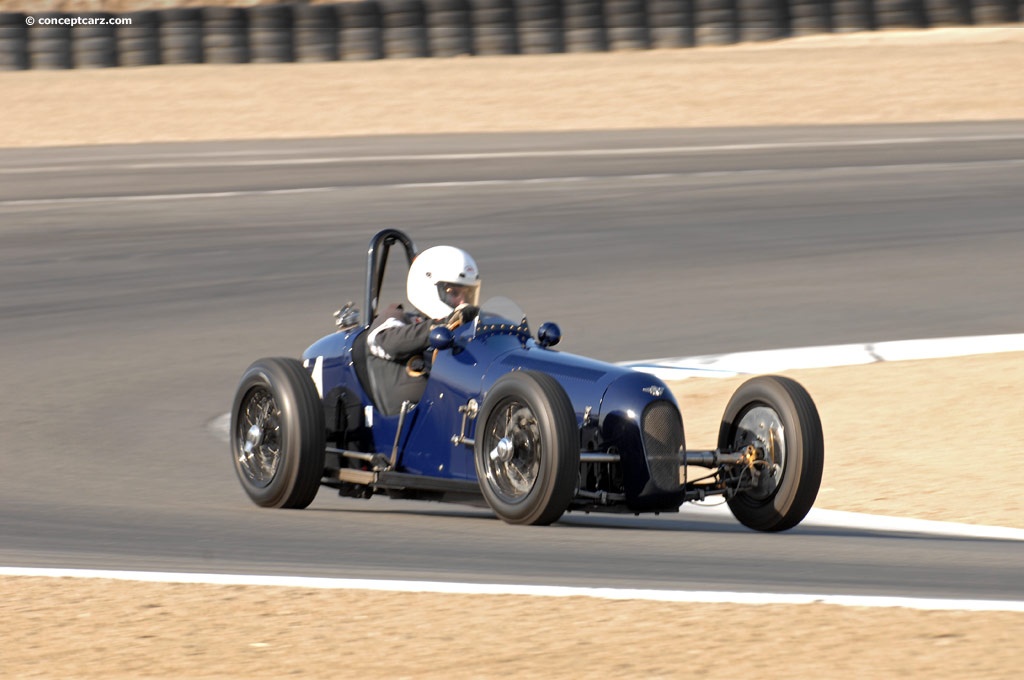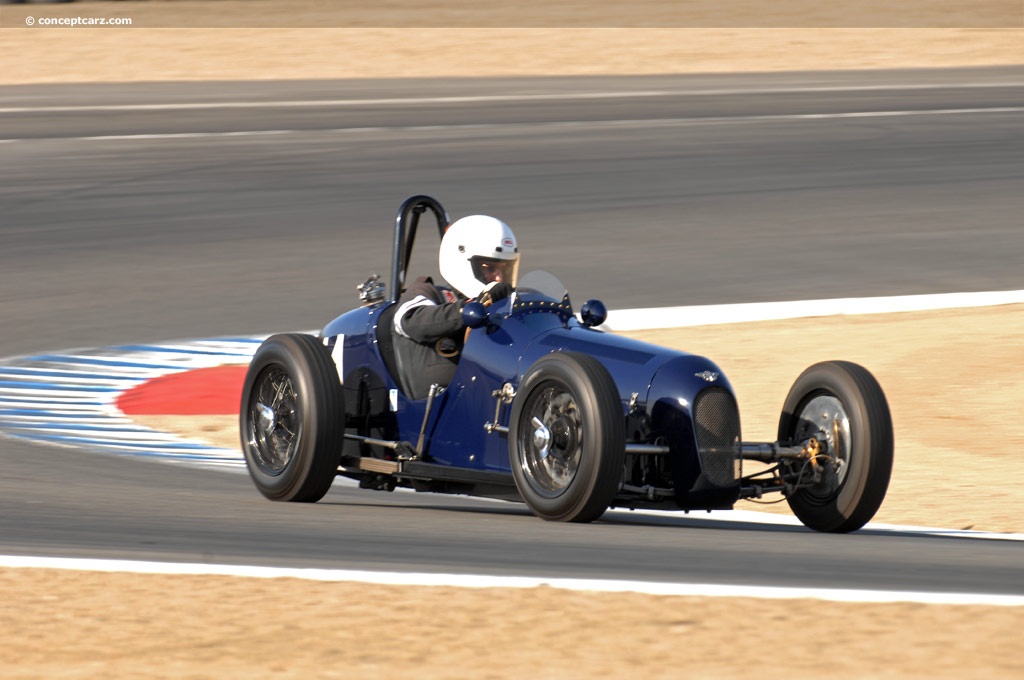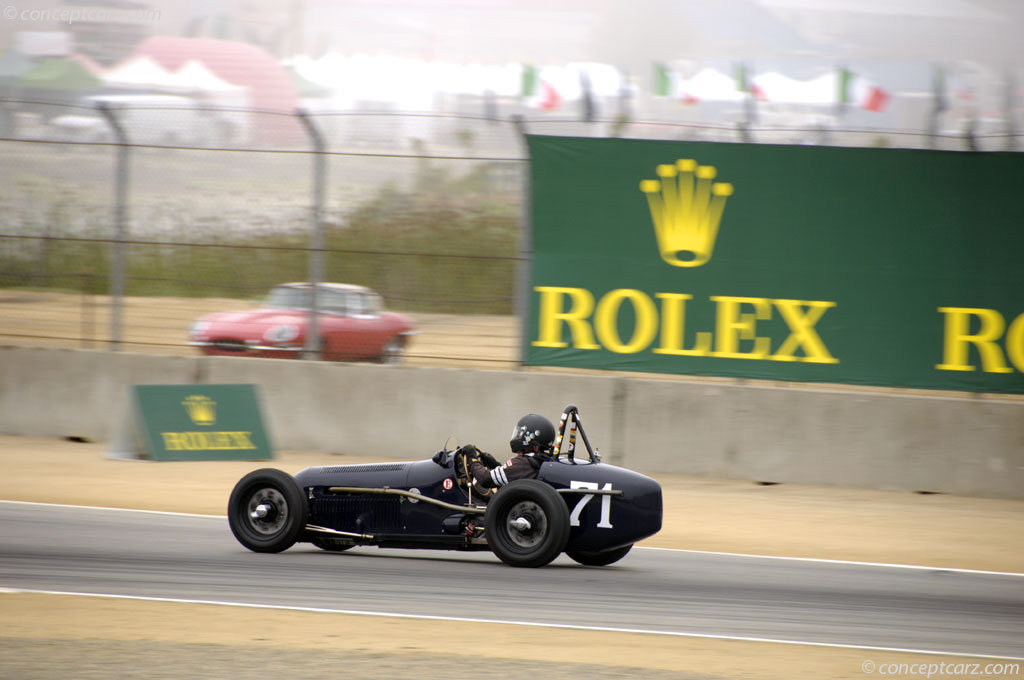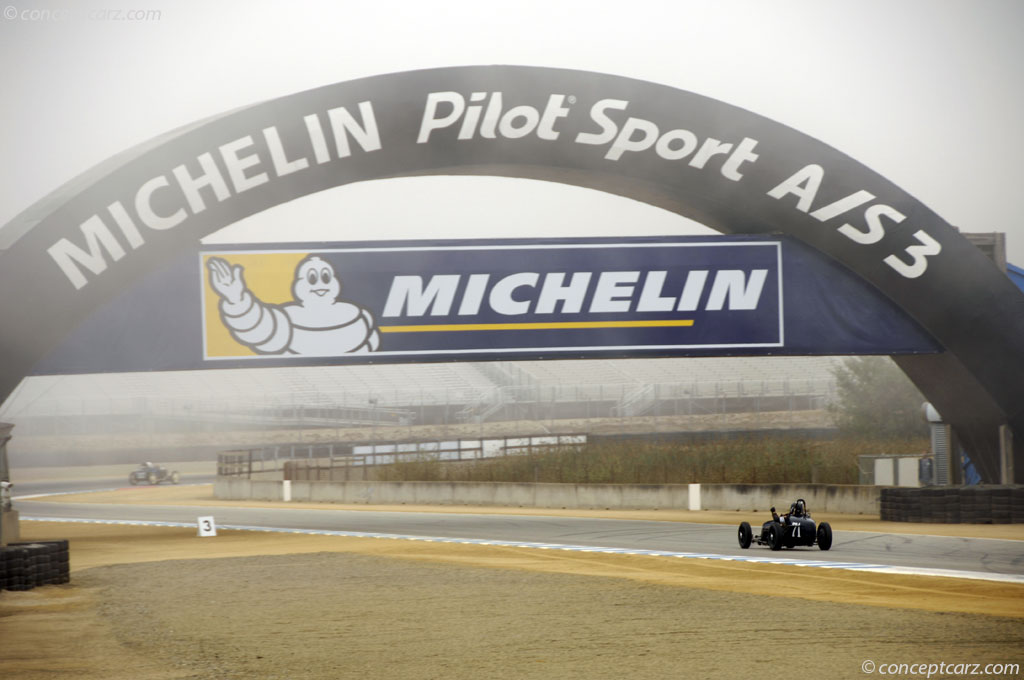The Austin Seven was produced from 1922 through to 1939 and nicknamed the 'Baby Austin.' Witnessing the popularity of the Ford Model T in the United States, Sir Herbert Austin understood that a smaller car in the U.K. market may attract the same kind of popularity. In spite of protestations from the company's board of directors who were concerned about the financial status of the company, Austin was able to win them over - albeit by threatening to take the idea to their competitor, Wolsely. With permission to start on his design, he enlisted the help of a young draughtsman named Stanley Edge. Austin invested a large amount of his own money into the design and patented many of its innovations. The investment paid dividends, as Austin was paid a royalty of two guineas on every car sold. Nearly 2,500 cars were made in 1923, the first year of production. Although production did not reach anticipated figures in that first year, over the years it transformed the fortunes of the Austin Motor Company and by 1939, when production finally ceased, 290,000 cars and vans had been manufactured. 
Monoposto Racer
Chassis #: 48037
View info and historyThe Austin Seven was economical, well-constructed, easily maintained, and simple. It brought motoring within the financial rear of many in the United Kingdom and it helped save the ailing Austin concern. By the mid-1920s the Seven dominated the light car market in Britain. Over its sixteen-year production lifespan, the Seven changed little, retaining the 'A'-frame chassis, transverse front springing, rear quarter-elliptic springs, and four-cylinder side-valve engine to the end. Several detail improvements were made along the way, including roomier bodies, coupled brakes, a three-bearing crankshaft, and long wheelbases (to name a few). Powering the Seven was a four-cylinder, side valve, three-bearing engine with a displacement of 696cc, and having a RAC rating of 7.2 hp. It had a cast cylinder block with a detachable head mounted on an aluminum crankcase. A single roller and two ball bearings were used for the crankshaft and the big-ends were splash lubricated. Lacking a water pump, cooling was by thermosiphon, and the dynamo was driven from the timing gears.Along with creating the detailed plans, Stanley Edge designed several of the vehicle's mechanical components such as the three-speed gearbox and clutch assembly. Much of the exterior styling was handled by Austin. The 'A' frame chassis design is believed to have been inspired by an American truck used in the Longbridge factory in the early 1920s. It was much smaller and weighed less than the Ford Model T, with a wheelbase of 75 inches and an overall weight of just under 800 pounds. The chassis was in the form of an 'A' with the engine placed between the channel sections at the narrow front end. 
Monoposto Racer
Chassis #: 48037
View info and historyThe suspension was comprised of a beam axle in the front with half elliptic transverse springs. In the back were quarter-elliptic springs cantilevered from the rear of the chassis. The back axle was of spiral bevel type offered with three ratios (4.4:1, 5.6:1 and 4.9:1). The 4.9:1 configuration was the most common until the 1930s. Brakes were placed on all four corners, and prior to 1930, the front brakes were operated by the handbrake and the rear by a footbrake. After 1930, they were fully coupled. A year later, the chassis grew by six inches. Early cars did not have shock absorbers, and the steering was by a worm-and-wheel mechanism. A short torque tube was attached to the differential housing and ran to a bearing and bracket on the rear axle cross member. Early in 1922, three prototypes were constructed and shown to the public in July of that year. Cars built prior to March of 1923 had the 696cc four-cylinder engine. After March, the bore was increased resulting in a 747cc displacement and 10.5 horsepower. A three-speed gearbox with reverse was bolted to the back of the engine and was offered with several gear ratios depending on the intended use of the vehicle. In 1932, a four-speed gearbox became available in a year later synchromesh was added to third and top ratios. Synchromesh was added to the second gear in 1934.
Monoposto Racer
Chassis #: 48037
View info and historyWhen production began, the sole version was the 'Chummy' tourer. By 1927, saloon, fabric saloon, and coupé models, plus a roomier tourer were on offer. In June of 1930, a re-styled, short-scuttle body design was introduced, giving them a modern appearance and retiring the old, vintage look. Over the years, the Aston Seven would be raced with great success at many different venues. Arthur Waite (Herbert Austin's son-in-law) found success at Brooklands in March of 1923, and then at Monza a month later. E. C. Gordon England (who owned a coachbuilding company had built the first Austin 7 saloon) set six new class records at Brooklands in a special lightweight 2-seater. He raced it in the 1100cc class for the Junior Car Club 200 mile race at Brooklands in October of 1923, where he finished in second place and broke five class records. By 1925 Gordon England had set nineteen 750 cc class records.Capitalizing on the racing successes, Aston began offering the Sports and the Brookland Super-Sports in January of 1924. The Brooklands Super Sport was nearly identical to Gordon England's record-breaker car, and each example was sold with a guarantee and certificate that it could achieve speeds of 80 miles per hour. 
Monoposto Racer
Chassis #: 48037
View info and historyThe Austin 7 was made under license in America by the American Austin Company from 1930. The Dixi company of Germany built a licensed version from 1927, and Rosengart in France from 1928. Rolling chassis were exported to Australia where they were given bodies locally. William Lyons (of Jaguar fame) was the co-founder of the Swallow sidecar Company in 1927. His company offered various coachwork and re-bodies for the Austin 7, which proved very popular, with approximately 3,500 bodies produced up until 1932, when Lyons started making complete cars under the SS brand.
by Daniel Vaughan | Feb 2020

Monoposto Racer
Chassis #: 48037
View info and history

Monoposto Racer
Chassis #: 48037
View info and history

Monoposto Racer
Chassis #: 48037
View info and history

Monoposto Racer
Chassis #: 48037
View info and history
by Daniel Vaughan | Feb 2020
Related Reading : Austin Seven History
The Austin Seven was produced from 1923 through 1939 with only minor modifications to the design throughout its production lifespan. It was a simple machine intended to provide the home mechanic the opportunity to race competitively. During the 1920s, the Austin Seven was a popular favorite in Britain, as its lightweight characteristics made it highly competitive. In 1934, the cars were given a lower....
Continue Reading >>
Continue Reading >>
Related Reading : Austin Seven History
British-based Austin Motor Company was formed in 1905 by Herbert Austin, later to be known as Sir Herbert, who had been a manager of the Wolseley Tool and Motor Car Company. Their first vehicle was powered by a four-cylinder engine that displaced five liters and was chain driven. Around 200 examples were produced during the five years of production. Production soon expanded to a wider range of....
Continue Reading >>
Continue Reading >>
1935 Austin Seven Special Vehicle Profiles
Recent Vehicle Additions
Related Automotive News

Raw Power Has a Stamp of Its Own Muscle Cars Roar at Spring Classic Auction
What do you get when you bring the U.S. Postal Service and Dana Mecums Original Spring Classic Auction together at the State Fairgrounds — a Muscle Car Extravaganza!
Since it began 26 years ago, Mecums Spring Classic auction in Indianapolis...

'Motor Klassik Award 2013': Five Awards for Mercedes-Benz
Victory in the categories Classics up to 1930, Classics 1947-1961, and 2012 Auction Car
Classics of the future G-Class wins in the Off-Roader category and the CLS Shooting Brake wins for the Luxury Segment
More than 22,000 M...

RICHARD PETTY DEDICATES MUSCLE CARS FOREVER STAMPS
Raw power gets a stamp of its own today as seven-time NASCAR National Champion Richard Petty helps dedicate the America on the Move Muscle Cars Forever stamps.
Petty, his son Kyle and Postmaster General Patrick Donahoe will dedicate the limited-edition...

MICHELIN INTRODUCES THE PILOT SPORT A/S 3 TIRE
MICHELIN INTRODUCES THE PILOT® SPORT AS 3™ TIRE A BREAKTHROUGH ALL-SEASON TIRE DELIVERS TOTAL PERFORMANCE IN WET, DRY AND COLD WEATHER CONDITIONS
NEW ORLEANS – (Dec. 11, 2012) – Michelin North America unveiled today the latest innova...

WORLD'S GREATEST SUPERCARS BATTLE FOR NEW FASTEST LAP AT PAGEANT OF POWER
Cholmondeley Pageant of Power (15-17 June, www.cpop.co.uk) announces new Supercar class
New racing category will see Lamborghini Aventador, BAC Mono, new Porsche 911 and many more competing for the lap record
Unique opportunity to see ultra-rare...






























